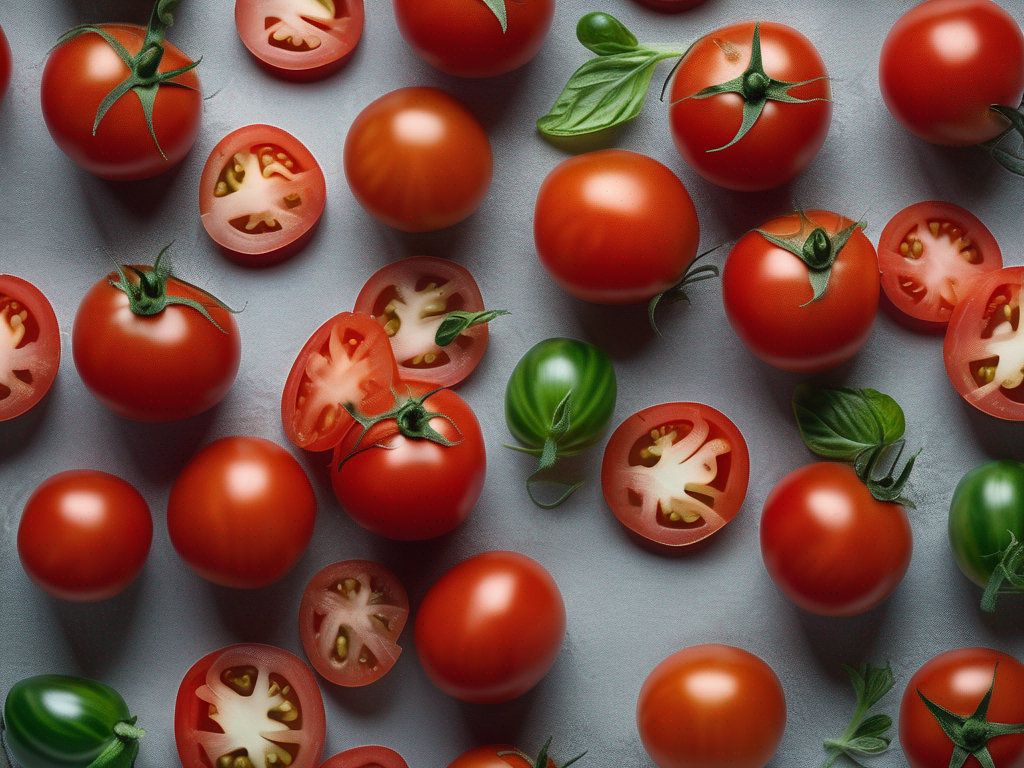
The Best Way to Store Garden Tomatoes for Maximum Freshness
Get Your Free Food Safety Cheat Sheet
30 most common foods with instant answers. Print it and stick it on your fridge—completely free!
The Best Way to Store Garden Tomatoes for Maximum Freshness
Garden tomatoes are a delicious and versatile ingredient that can elevate a wide range of dishes. Whether you grow your own tomatoes or purchase them from a local farmer's market, proper storage is key to preserving their flavor and freshness. In this comprehensive guide, we will explore the best practices for storing garden tomatoes to ensure they stay fresh and flavorful for as long as possible. (Garden tomato)
Understanding the Importance of Proper Tomato Storage
Before delving into the specifics of storing garden tomatoes, it's essential to understand why proper storage is crucial. Tomatoes are a perishable fruit that can quickly lose their flavor and texture if not stored correctly. Factors such as temperature, humidity, and air exposure can all impact the quality of tomatoes. By following the right storage techniques, you can extend the shelf life of your garden tomatoes and enjoy their delicious taste for longer.
Choosing the Right Tomatoes for Storage
Not all tomatoes are created equal when it comes to storage. Some varieties are better suited for long-term storage than others. When selecting tomatoes for storage, consider the following factors:
1. Tomato Variety
Different tomato varieties have varying levels of acidity, firmness, and moisture content, which can affect their storage life. Opt for varieties known for their storage capabilities, such as Roma, San Marzano, or Amish Paste tomatoes.
2. Ripeness
Choose tomatoes that are firm and ripe but not overly soft. Overripe tomatoes are more prone to spoilage and may not last as long in storage.
3. Size
Smaller tomatoes tend to have a thicker skin and higher acidity, making them better candidates for storage. Cherry tomatoes and grape tomatoes are excellent options for long-term storage.
Storing Garden Tomatoes: Best Practices
Now that you've selected the right tomatoes for storage, it's time to explore the best practices for storing them to maintain their freshness and flavor.
1. Temperature and Humidity
Proper temperature and humidity levels are essential for preserving the quality of garden tomatoes. Follow these tips:
- Store tomatoes at room temperature, ideally between 55-70°F (13-21°C).
- Avoid storing tomatoes in the refrigerator, as temperatures below 55°F (13°C) can cause the tomatoes to lose flavor and texture.
- Keep tomatoes in a cool, dry place away from direct sunlight and heat sources.
2. Storage Containers
The right storage container can make a significant difference in prolonging the shelf life of garden tomatoes. Consider the following options:
- Use a breathable container such as a paper bag or cardboard box to allow for air circulation.
- Avoid storing tomatoes in plastic bags or airtight containers, as they can trap moisture and lead to mold growth.
3. Handling and Placement
Proper handling and placement of tomatoes can help prevent bruising and extend their freshness:
- Handle tomatoes with care to avoid bruising or damaging the skin.
- Store tomatoes stem-side down to prevent moisture loss and prolong shelf life.
- Check stored tomatoes regularly for any signs of ripening or spoilage and remove any damaged tomatoes to prevent them from affecting others.
4. Freezing and Canning
If you have an abundance of garden tomatoes and want to preserve them for an extended period, consider freezing or canning them:
- To freeze tomatoes, blanch them in boiling water, peel off the skins, and place them in a freezer-safe container.
- For canning, follow safe canning practices to preserve tomatoes in jars for long-term storage.
Safety Tips for Storing Garden Tomatoes
When storing garden tomatoes, it's essential to prioritize food safety to prevent contamination and spoilage. Keep the following safety tips in mind:
- Wash tomatoes thoroughly before storing to remove any dirt or residue.
- Avoid storing tomatoes near raw meat, poultry, or seafood to prevent cross-contamination.
- Use clean, food-safe containers for storing tomatoes to prevent bacterial growth.
Conclusion
Proper storage is key to maintaining the freshness and flavor of garden tomatoes. By following the best practices outlined in this guide, you can extend the shelf life of your tomatoes and enjoy their delicious taste in a variety of dishes. Remember to choose the right tomatoes for storage, maintain proper temperature and humidity levels, use suitable storage containers, handle tomatoes with care, and prioritize food safety at all times. With these tips in mind, you can make the most of your garden tomatoes and savor their vibrant flavor for as long as possible.
For more information on garden tomatoes and other food storage tips, visit [our main food page](/food/garden tomato). (Garden tomato)
Authoritative Food Safety References
These agencies and university labs inform every tip and health precaution we publish.
USDA FoodKeeper – Cold Storage Guidelines
Official refrigerator, freezer, and pantry timelines maintained by the U.S. Department of Agriculture.
Visit USDA FoodKeeperFDA Produce Safety Rule & Grower Guidance
Field-to-fridge handling practices that prevent contamination of fruits, vegetables, and leafy greens.
Visit FDA Produce SafetyCDC Foodborne Illness Prevention Hub
Surveillance-backed guidance on pathogens, symptoms, and steps to reduce foodborne illness risk.
Visit CDC Food SafetyUC Davis Postharvest Technology Center
University research detailing optimal storage atmospheres for produce after harvest.
Visit UC Davis PostharvestPenn State Extension – Home Food Preservation & Safety
Peer-reviewed extension bulletins on safe canning, chilling, and reheating practices.
Visit Penn State ExtensionGet Your Free Food Safety Cheat Sheet
30 most common foods with instant answers. Print it and stick it on your fridge—completely free! Want more? Upgrade to the complete guide with 70+ foods.
Scan your food directly and get instant safety info using our AI-powered camera feature.